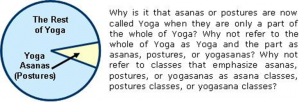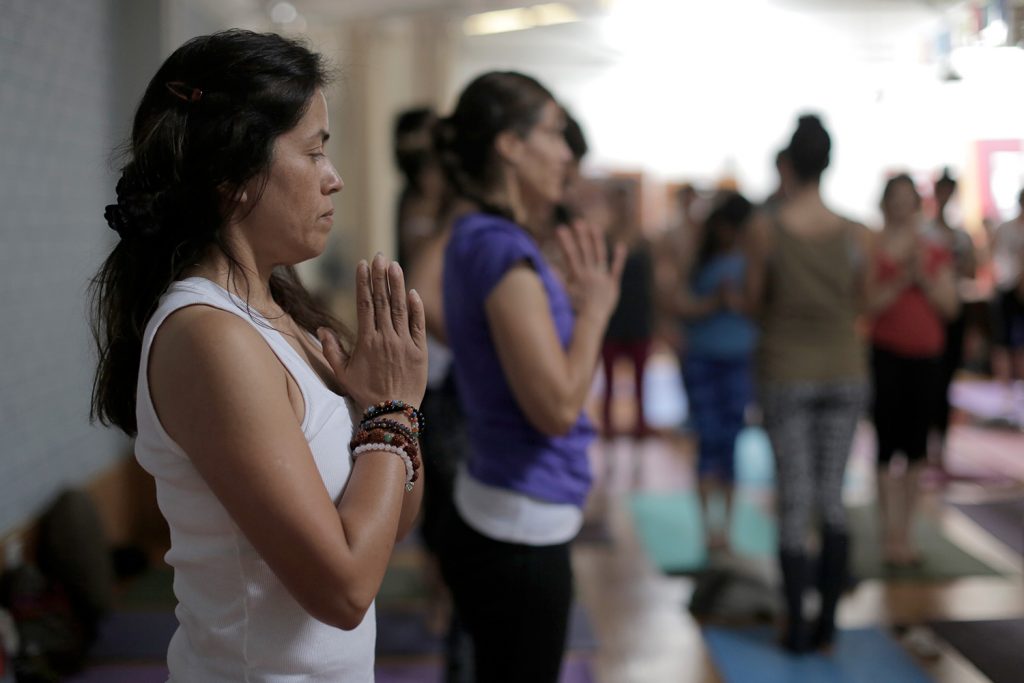Approaches to the True Goal of Yoga (part 6)
A human body is a wonderful, functional machine, and proper care of it is essential. However, according to traditional Yoga the body is simply an instrument, and its maintenance is not the ultimate goal.
There is no anti-body perspective nor a conflict between philosophies. Instead, the intention is to clarify goals and the tools necessary to attain them.
Once again, the goal of Yoga is Yoga – period!
 None of the individual levels are the goal. In authentic, traditional yoga, students work with and trains all levels of their beings. This includes relationships, self-exploration, control of the senses, body, breath, and mind. However, none of separate disciplines are Yoga.
None of the individual levels are the goal. In authentic, traditional yoga, students work with and trains all levels of their beings. This includes relationships, self-exploration, control of the senses, body, breath, and mind. However, none of separate disciplines are Yoga.
Authentic, traditional Yoga balances the training of all the following:
- Relationships: The aspirant builds relationships with practices such as non-violence, truthfulness, non-stealing, and non-possessiveness.
- Senses: The aspirant trains the senses so as to consciously regulate them in positive ways.
- Body: The aspirant works with the body so as to make it flexible, strong, and steady.
- Breath: The aspirant controls the breath so as to make it smooth, slow, steady, and serene.
- Mind: The aspirant deals with the mind and its fluctuations at every level.
Students need to remain aware that the single goal of Yoga is beyond all of these specific trainings. They must each be seen as steps in order to assure continued progress. Otherwise, they become obstacles or “veils” that block or hinder the realization of the True Self they are seeking.
Traditional vs. Modern Yoga
Swami Rama writes about the comparison of traditional Yoga and modern Yoga in his text, “Path of Fire and Light”:
“The majority of people view Yoga as a system of physical culture. Very few understand that Yoga science is complete in itself, and deals systematically with body, breath, mind, and spirit.
“When one understands that a human being is not only a physical being, but a breathing being and a thinking being too, then his research does not limit itself to the body and breath only.
“For him, gaining control over the mind and its modifications, and the feelings and emotions, become more important than practicing a few postures or breathing exercises. Meditation and contemplation alone can help the aspirant in understanding, controlling, and directing the mind.”
In his opening paragraph of “Lectures on Yoga,” Swami Rama explains:
“The word Yoga is much used and much misunderstood these days, for our present age is one of faddism, and Yoga has often been reduced to the status of a fad. Many false and incomplete teachings have been propagated in its name, it has been subject to commercial exploitation, and one small aspect of Yoga is often taken to be all of Yoga. For instance, many people in the West think it is a physical and beauty cult, while others think it is a religion. All of this has obscured the real meaning of Yoga.”
In the second volume of “Path of Fire and Light,” Swami Rama goes even further, where he flatly declares:
“The word ‘Yoga’ has been vulgarized and does not mean anything now.”
The union of self and True Self
So, again, the goal or destination of Yoga is Yoga itself, union itself, of the (separate or egoic) self and the True Self.
Swami Sivananda Saraswati (founder of Divine Life Society of Rishikesh, India) writes of Ashtanga Yoga:
“It is said that the original propounder of classical Yoga was Hiranyagarbha Himself. It is Patanjali Maharishi who formulated this science into a definite system under the name of Ashtanga Yoga or Raja Yoga. This forms one of the Shad-Darsananas or Classical Systems of Philosophy…. Patanjali’s Raja Yoga is generally termed the Ashtanga Yoga or the Yoga of Eight Limbs, through the practice of which freedom is achieved.”
Many people work with diet, exercise, and interpersonal relationships. This may include physical fitness classes, food or cooking seminars. Forms of personality work include support groups, psychotherapy, and confiding with friends. When done alone, these are individual tools, and are therefore not Yoga, however beneficial they may be.
And yet, combining work with the body, food, relationships, and other elements may very much fall under the domain of Yoga but only if Yoga is ultimately the goal.
The key to understanding this concept lies within that which one holds in their heart and mind, plus their degree of their conviction. Without the direction of these methods towards Samadhi, the final state of Yoga, the result will not be Yoga.
Next; “Approaches to the True Goal of Yoga (Part 7).”
